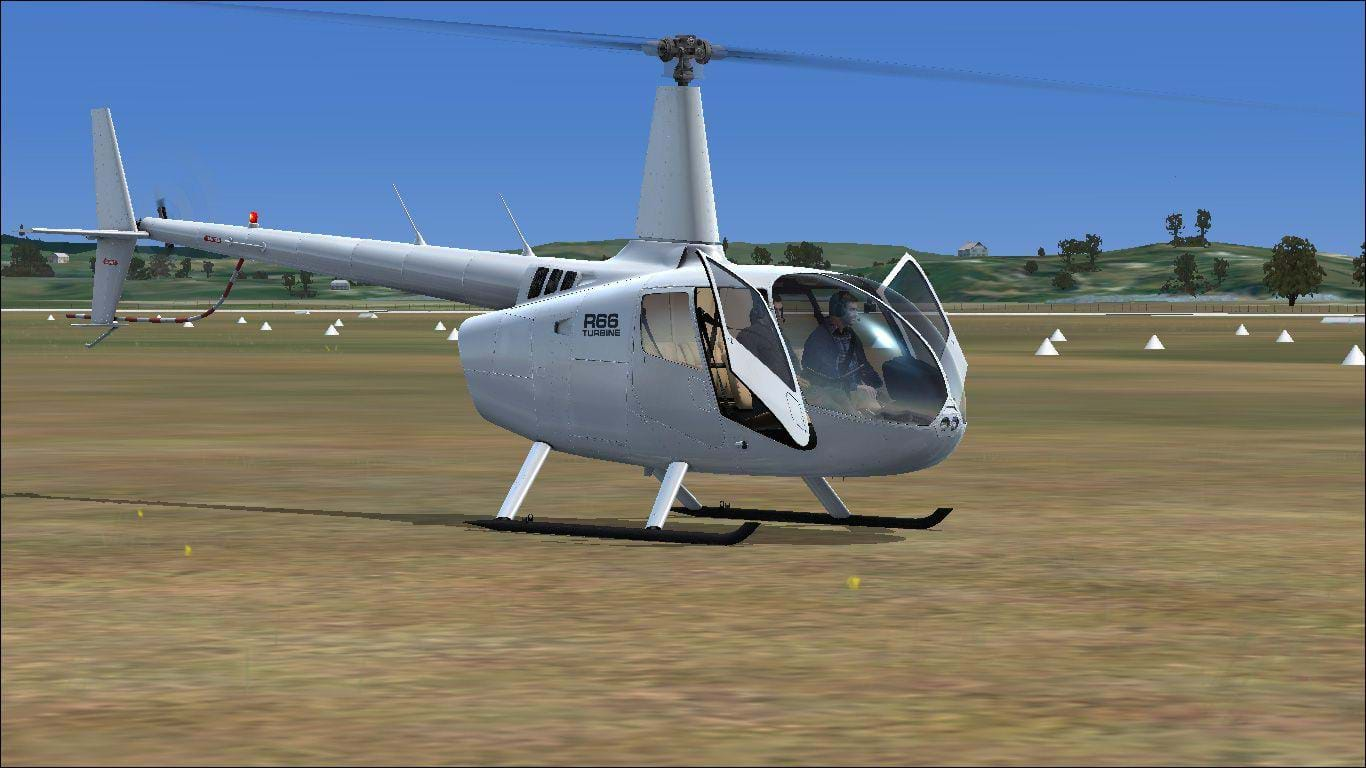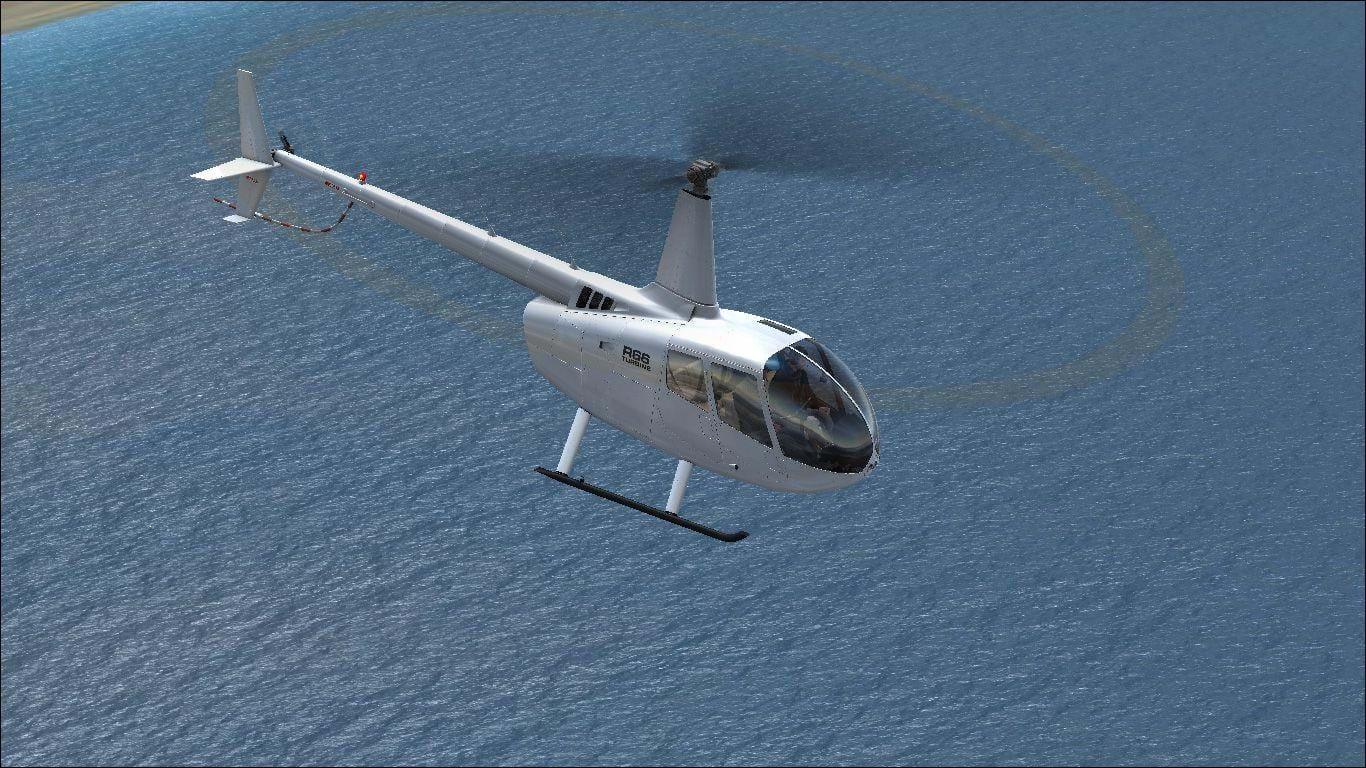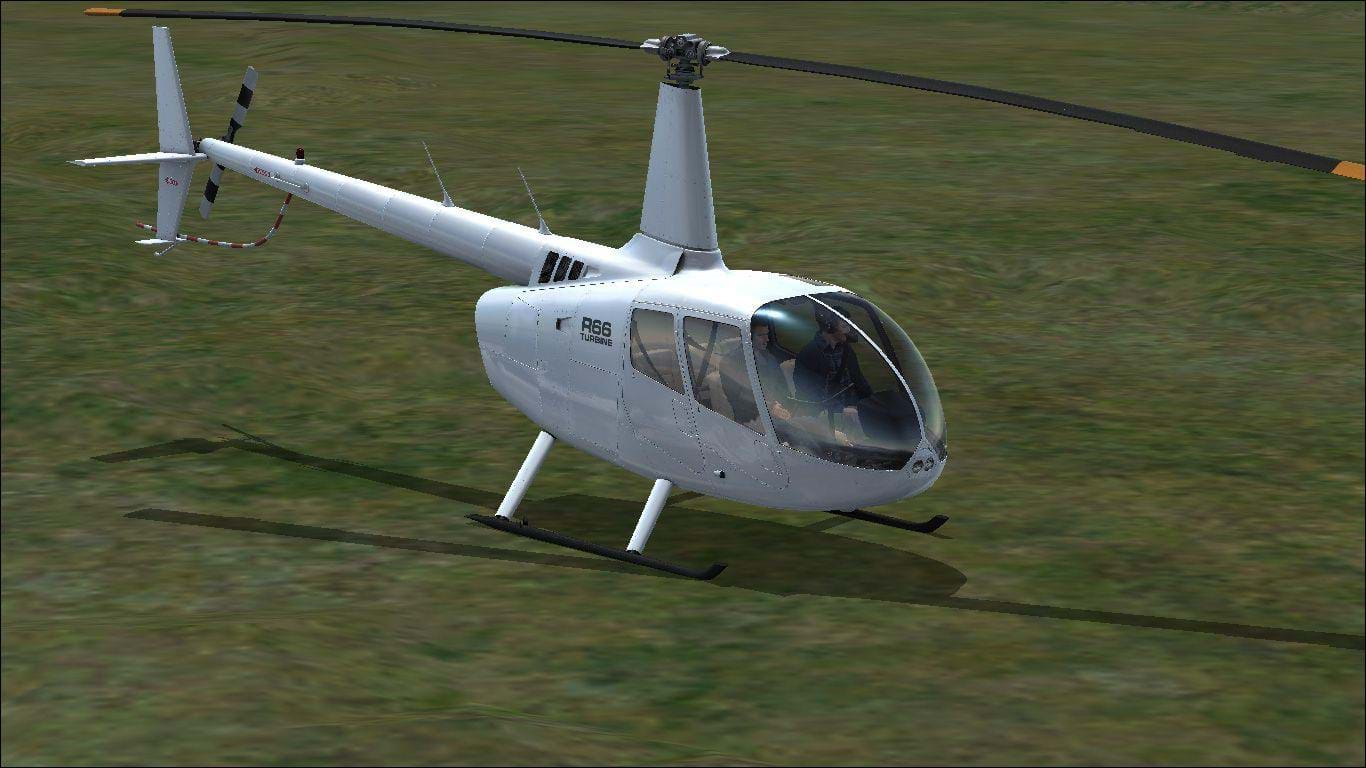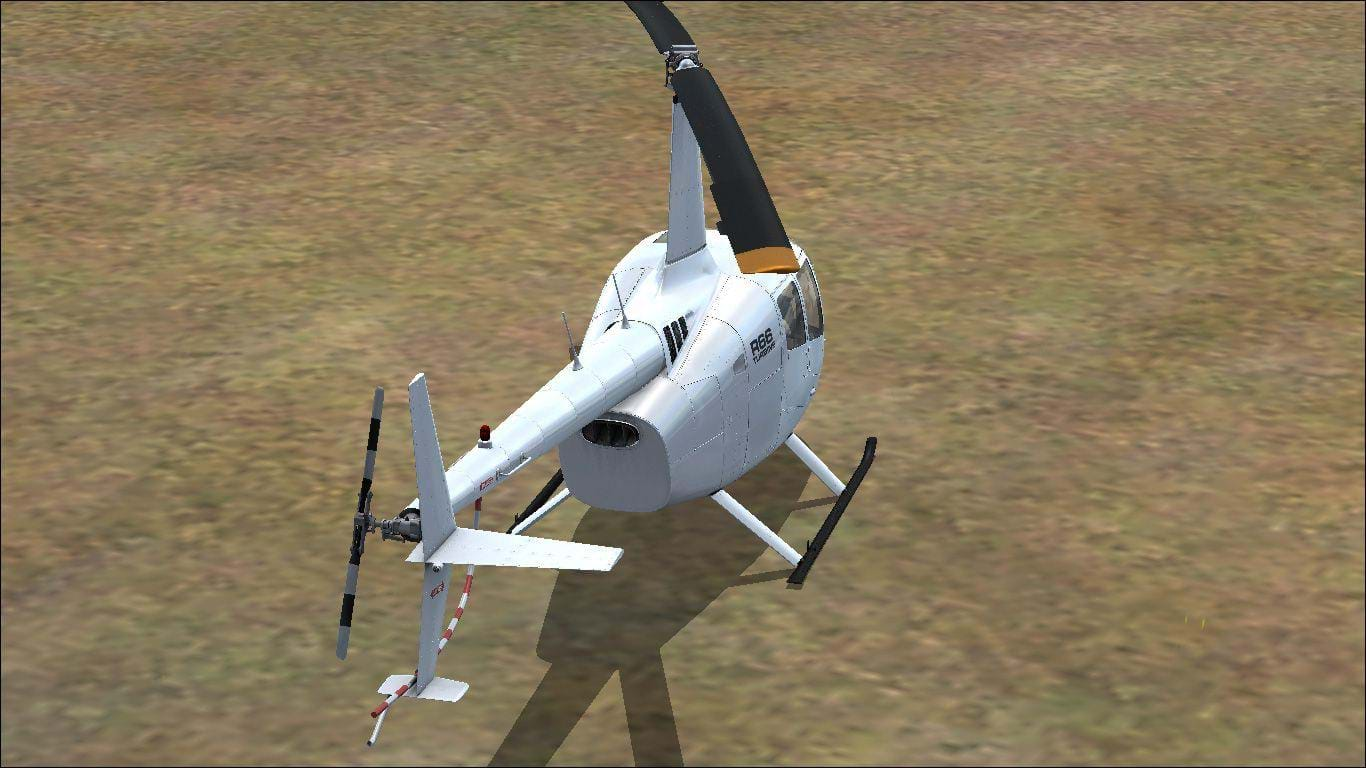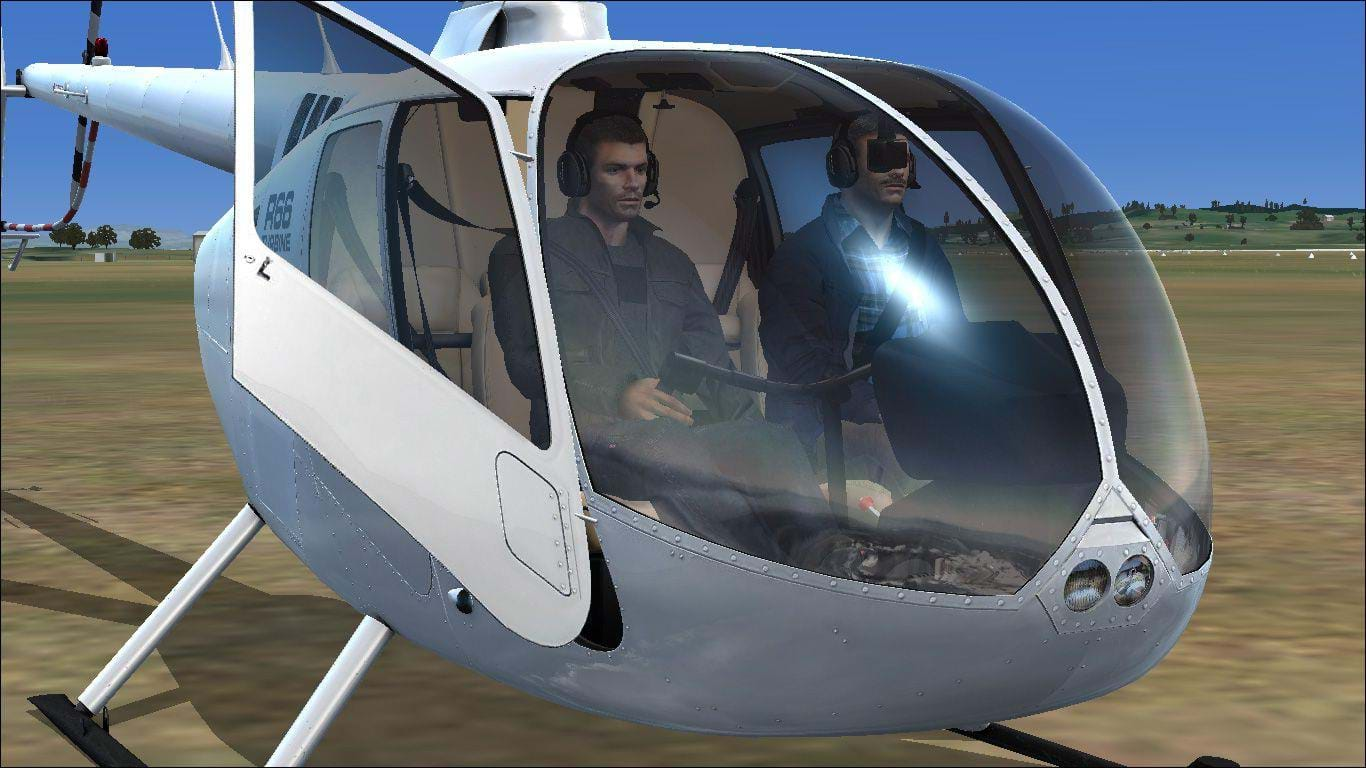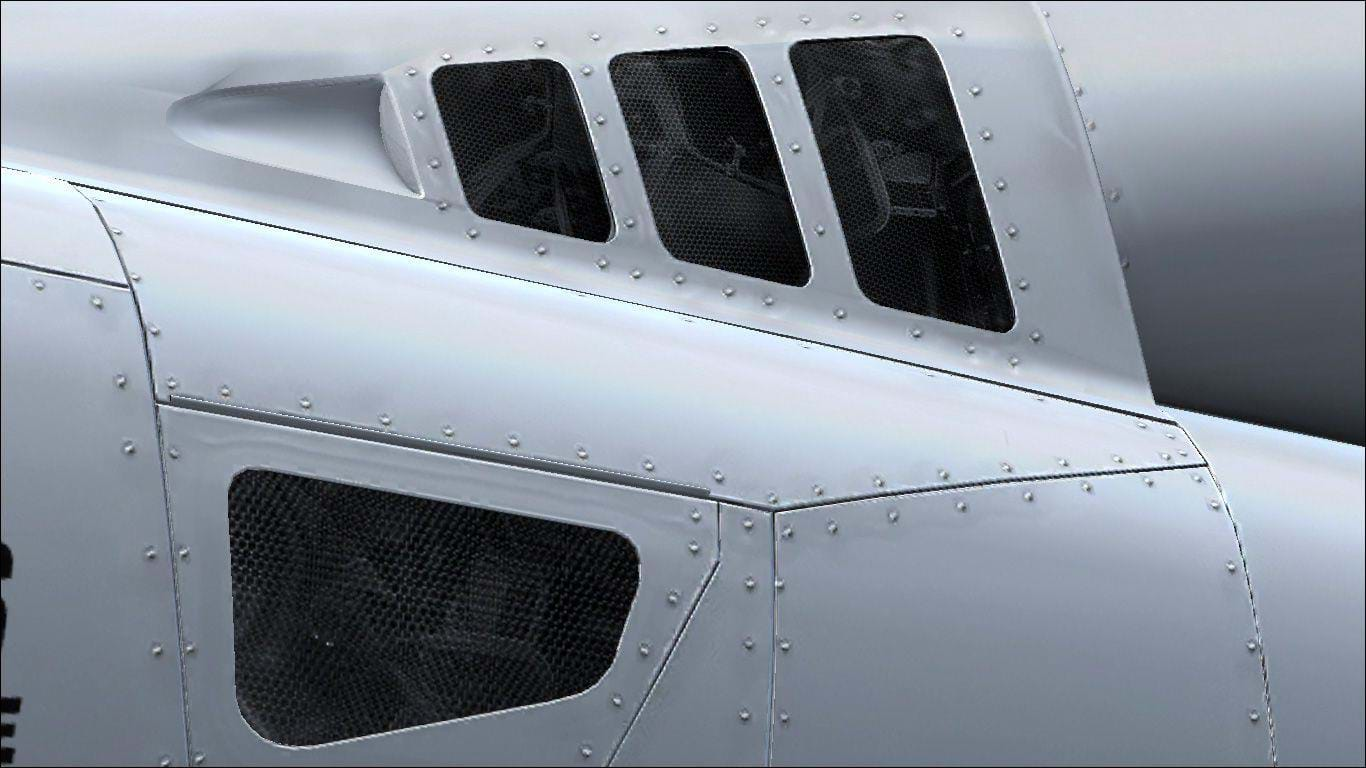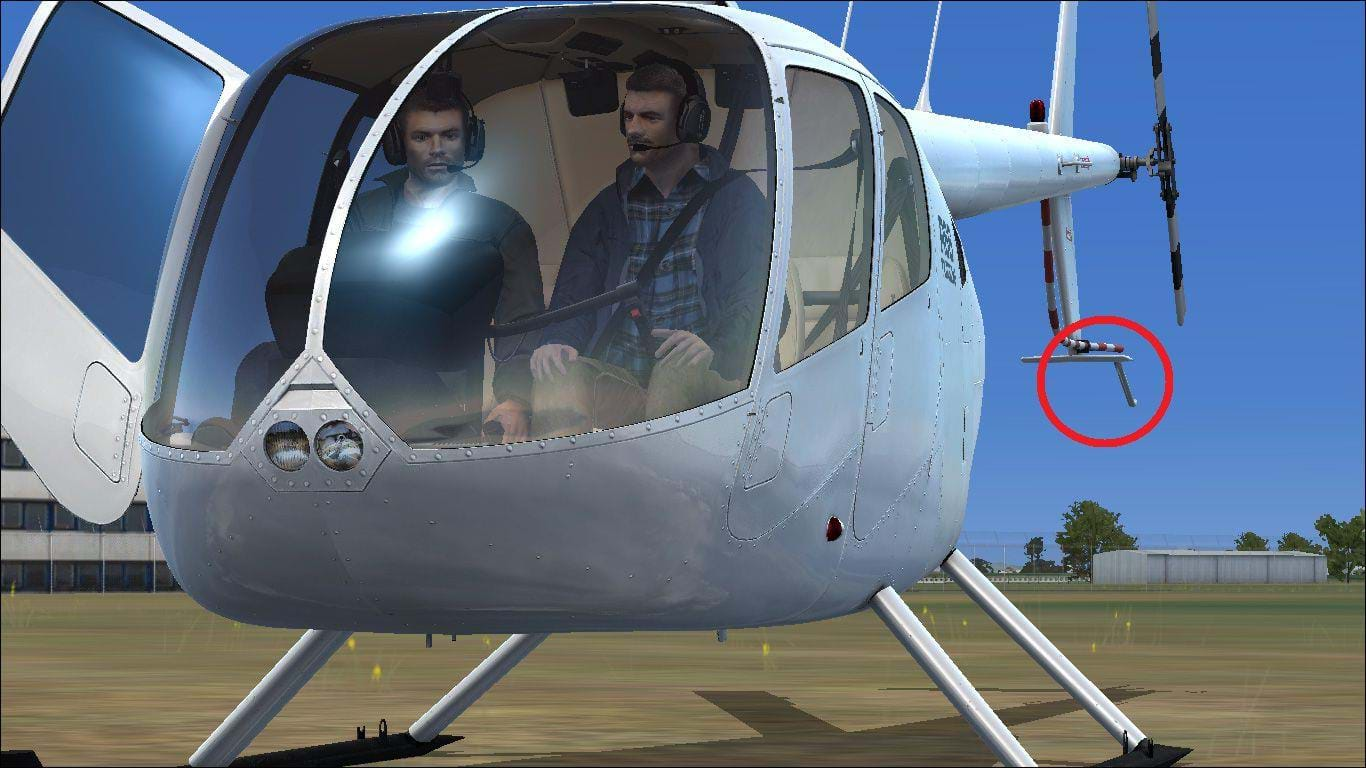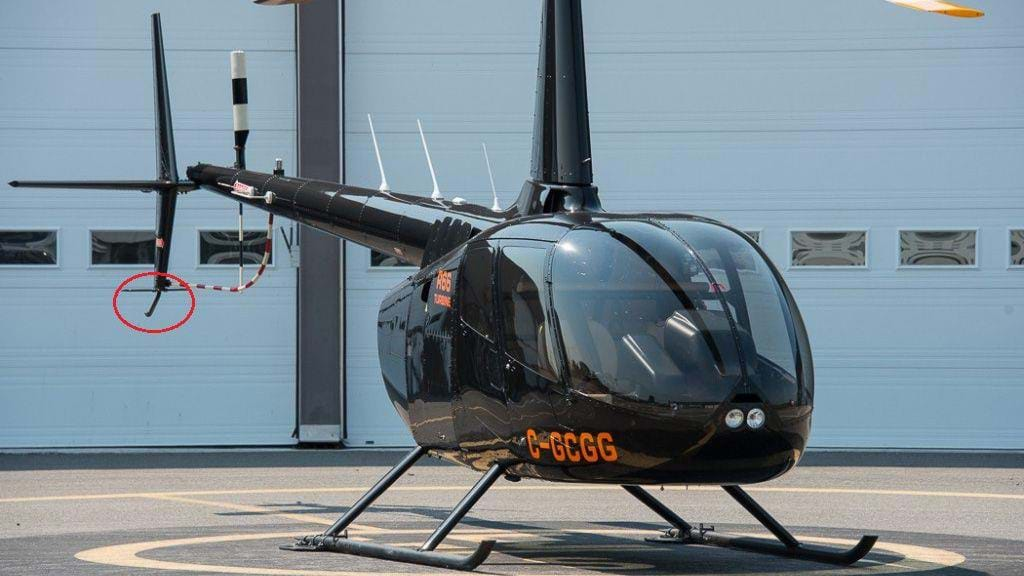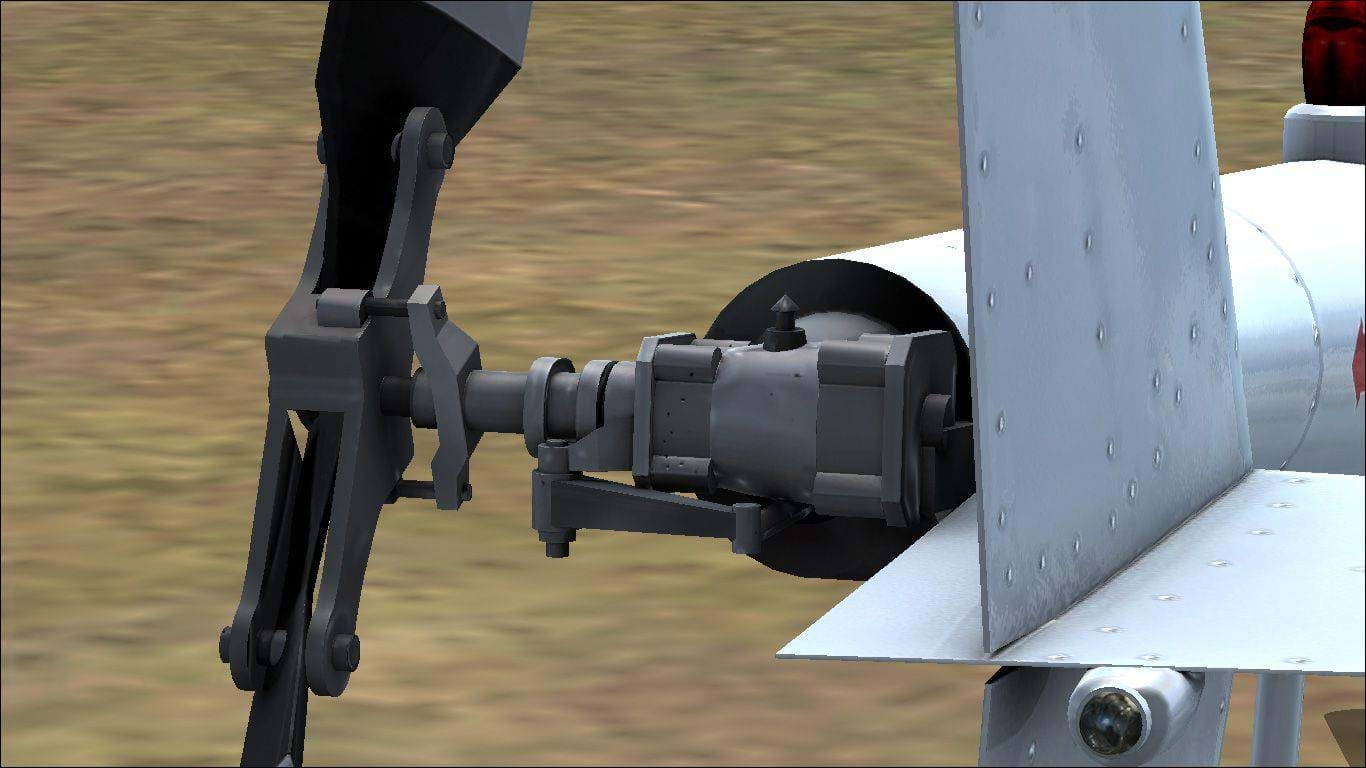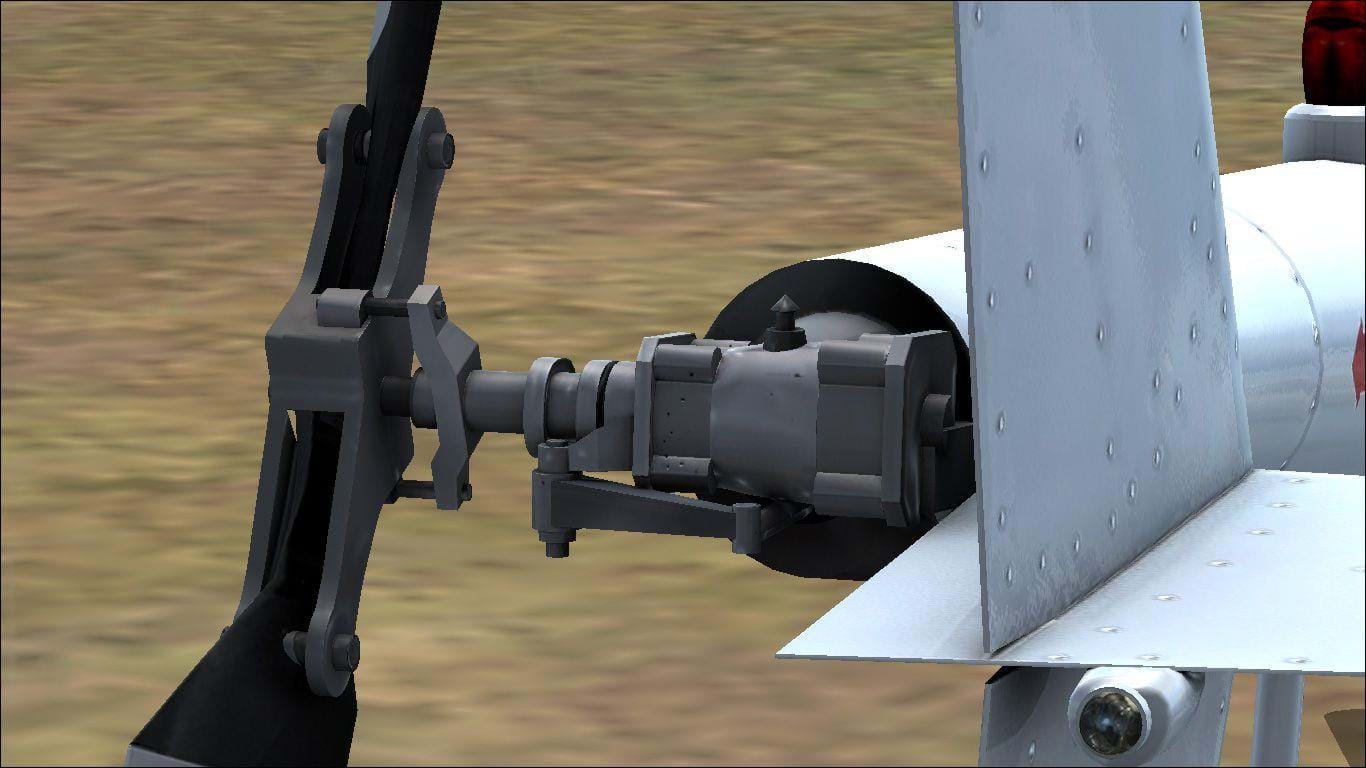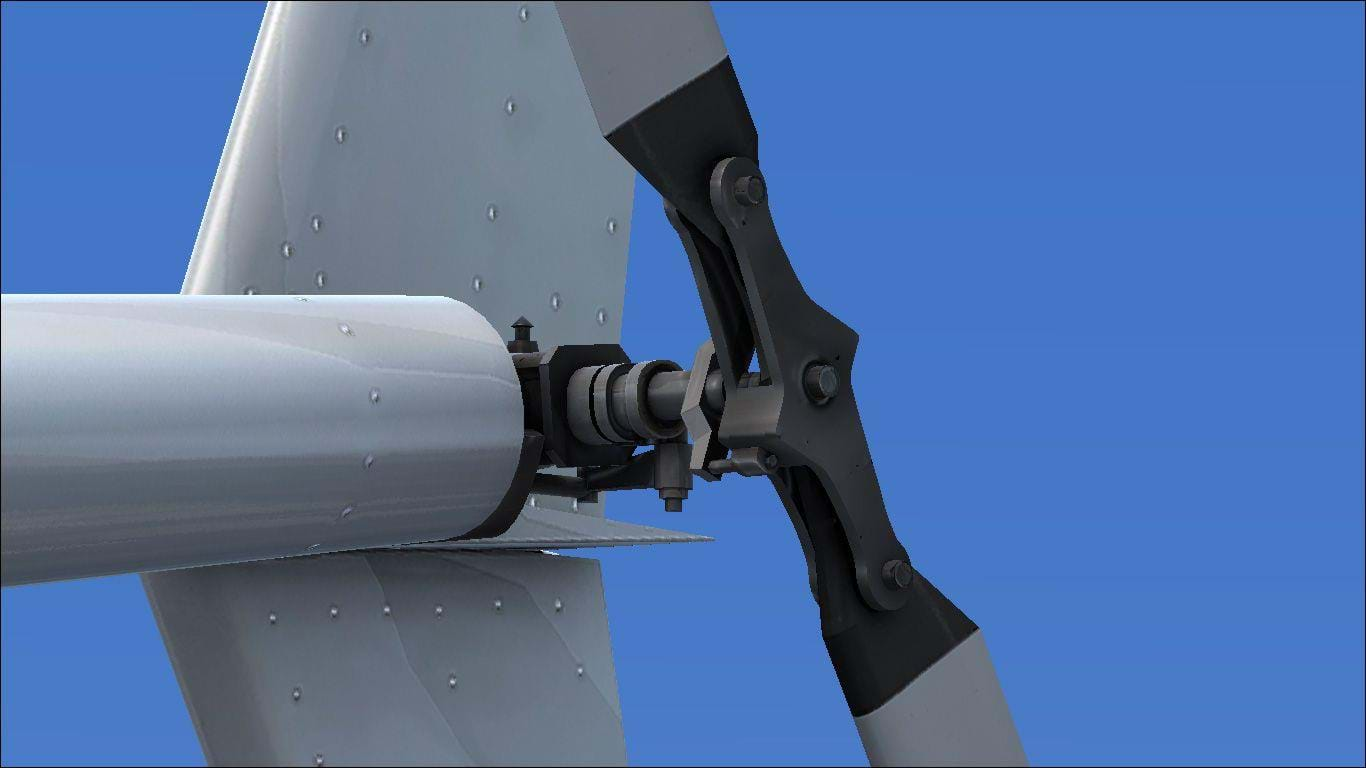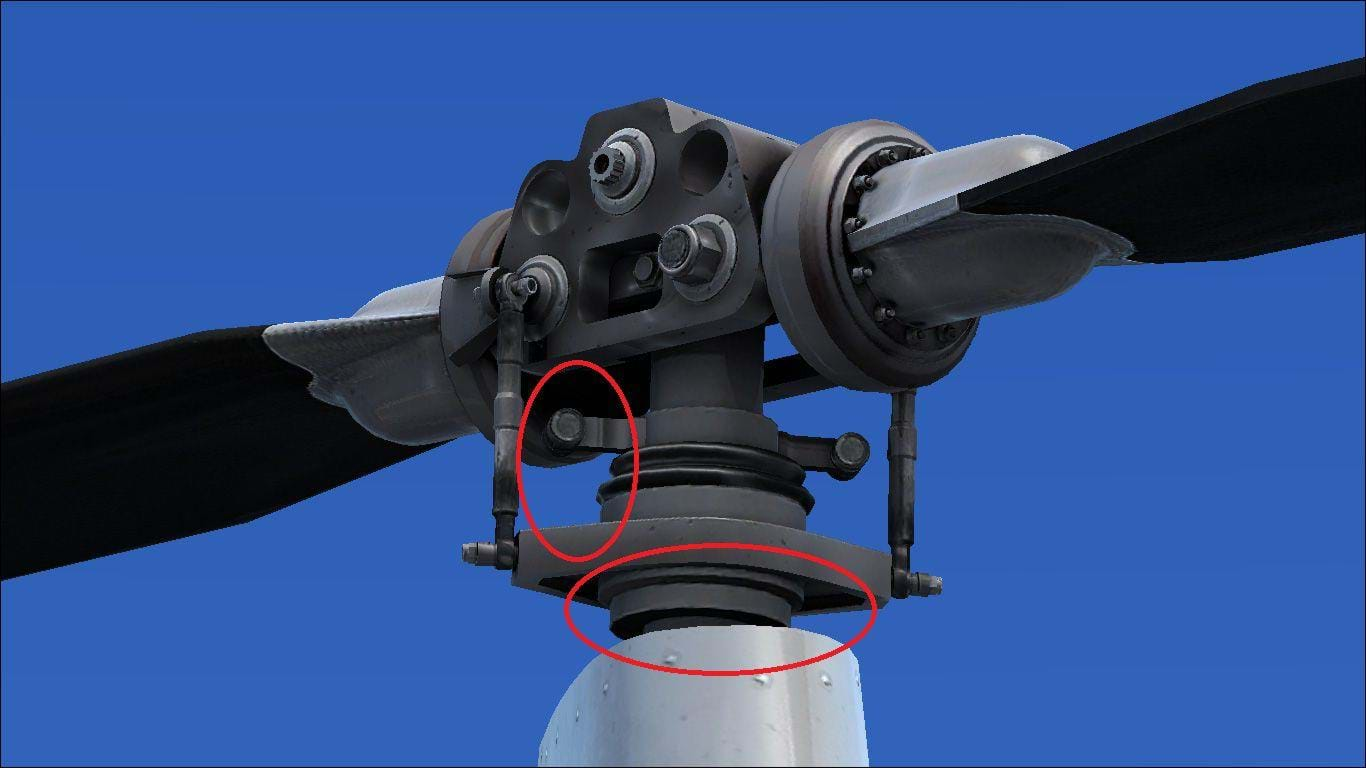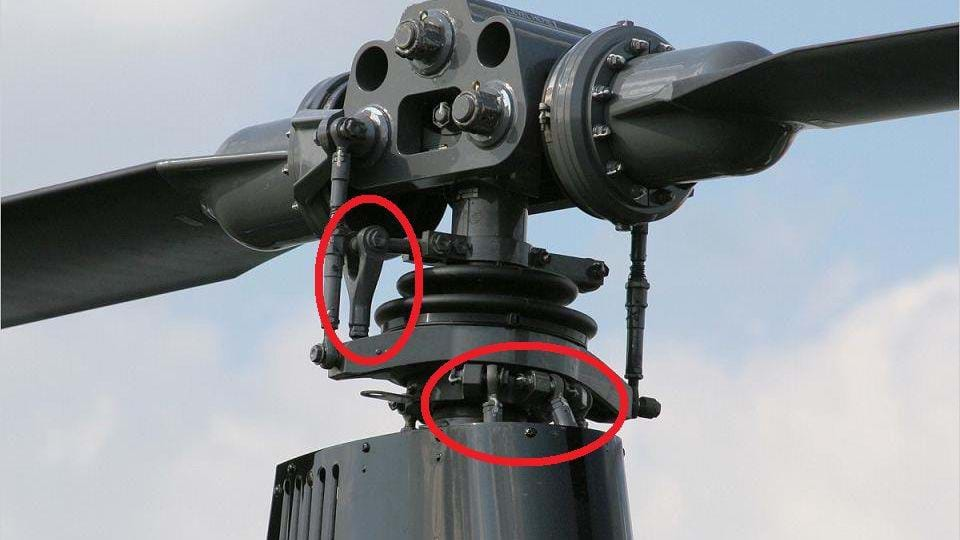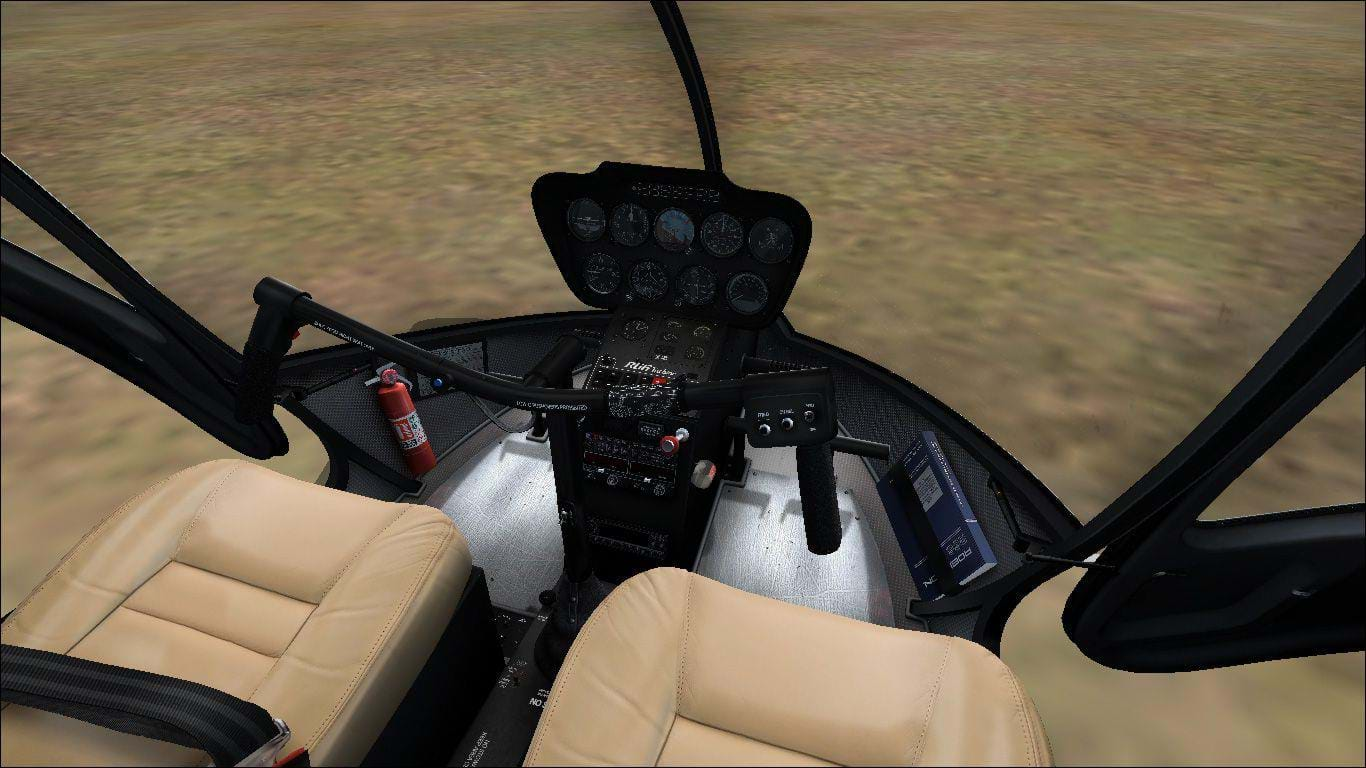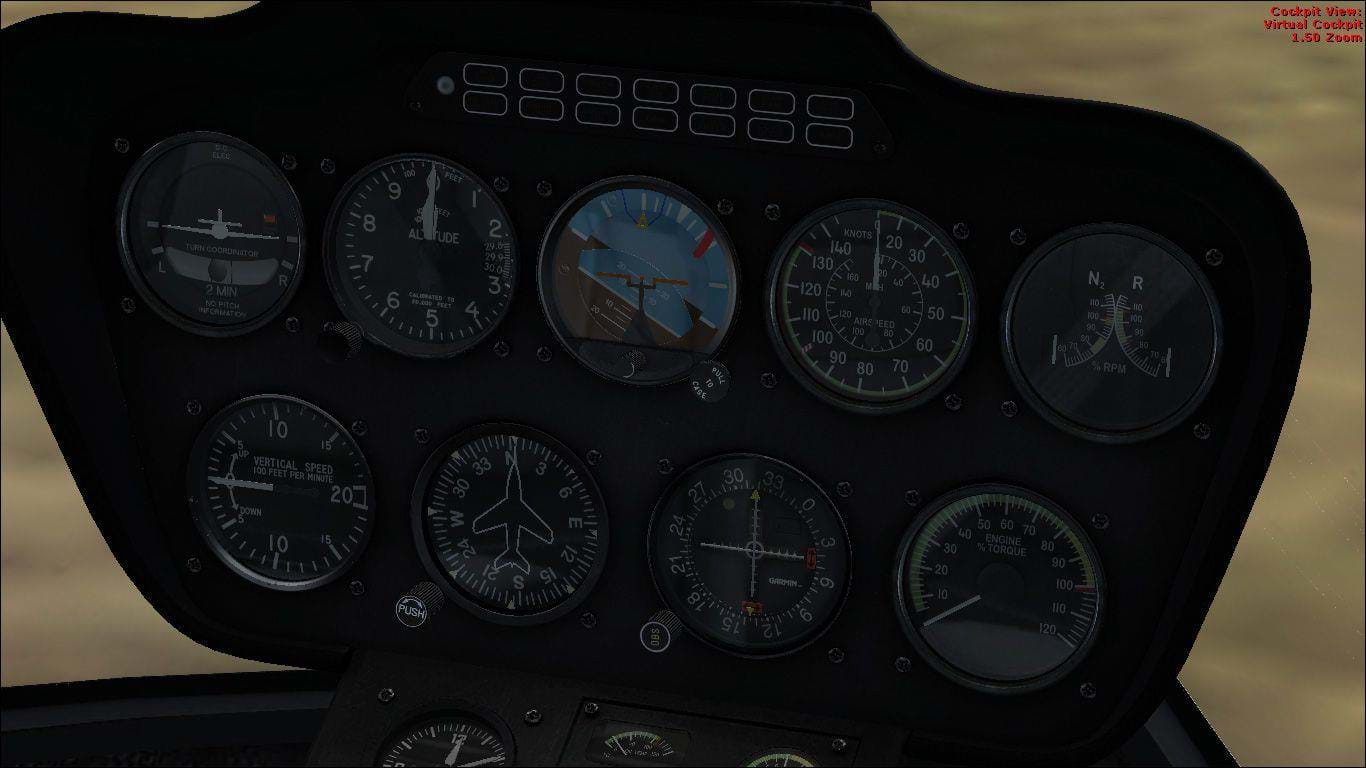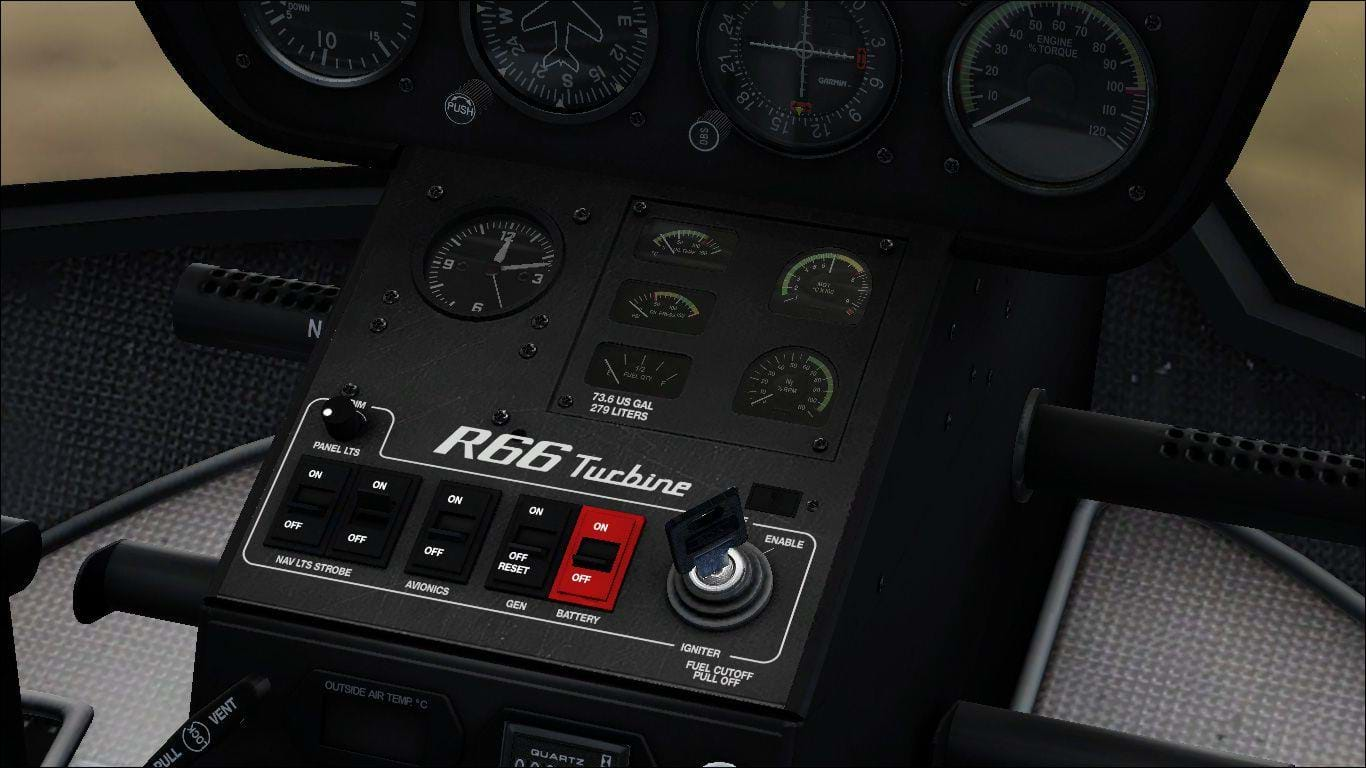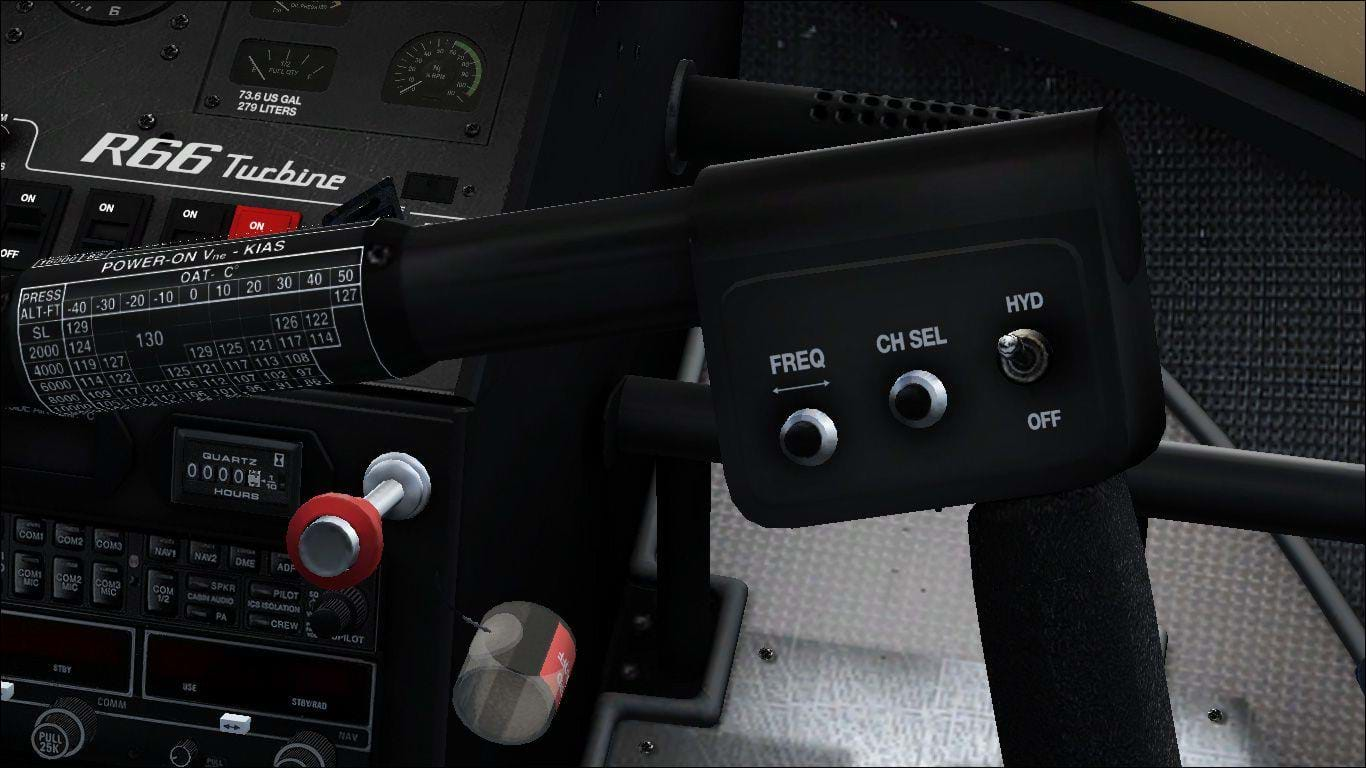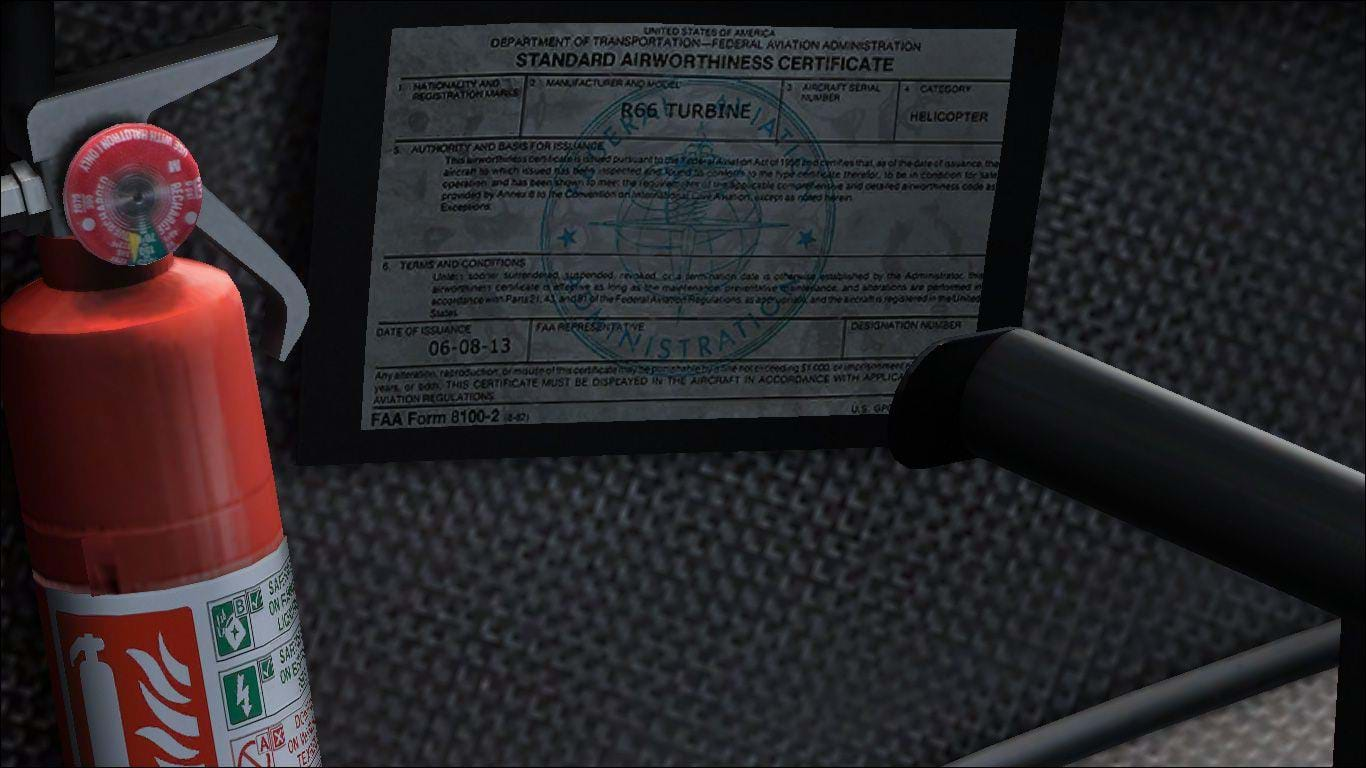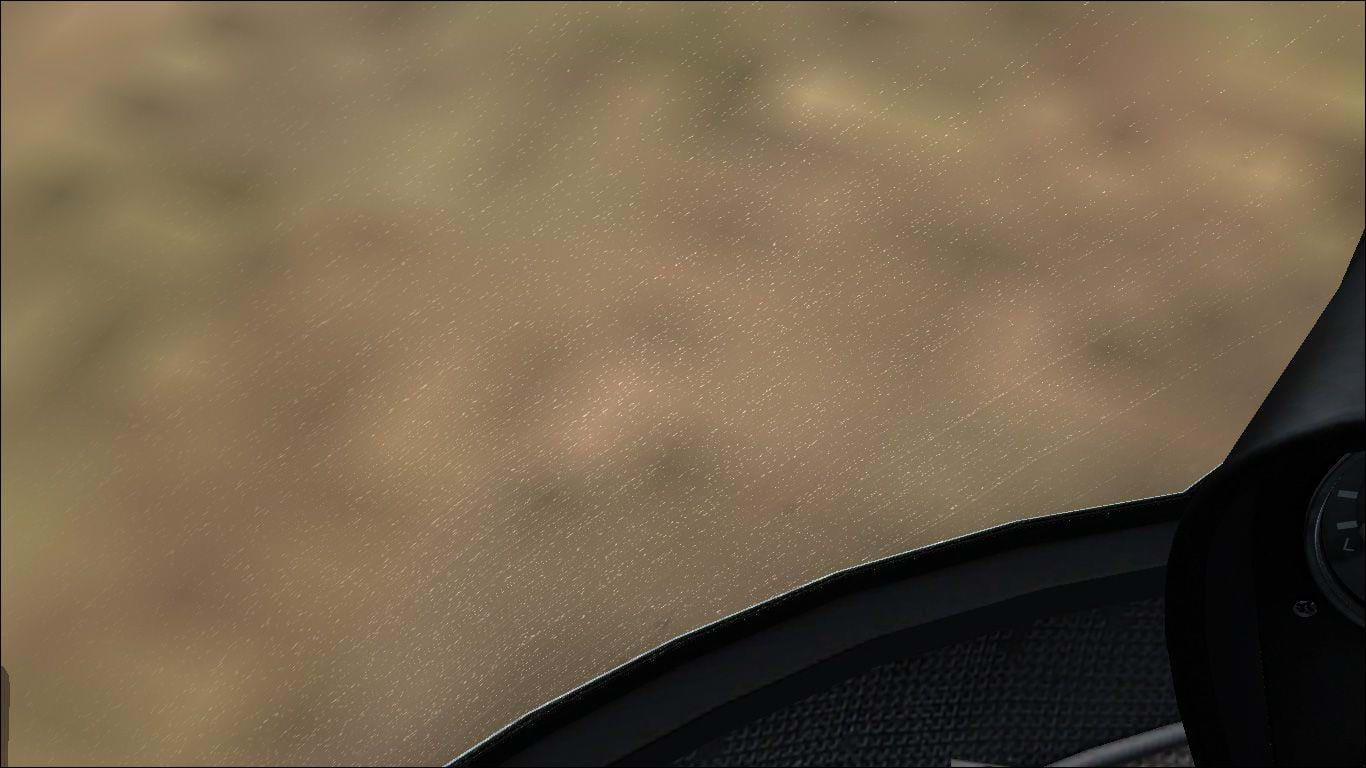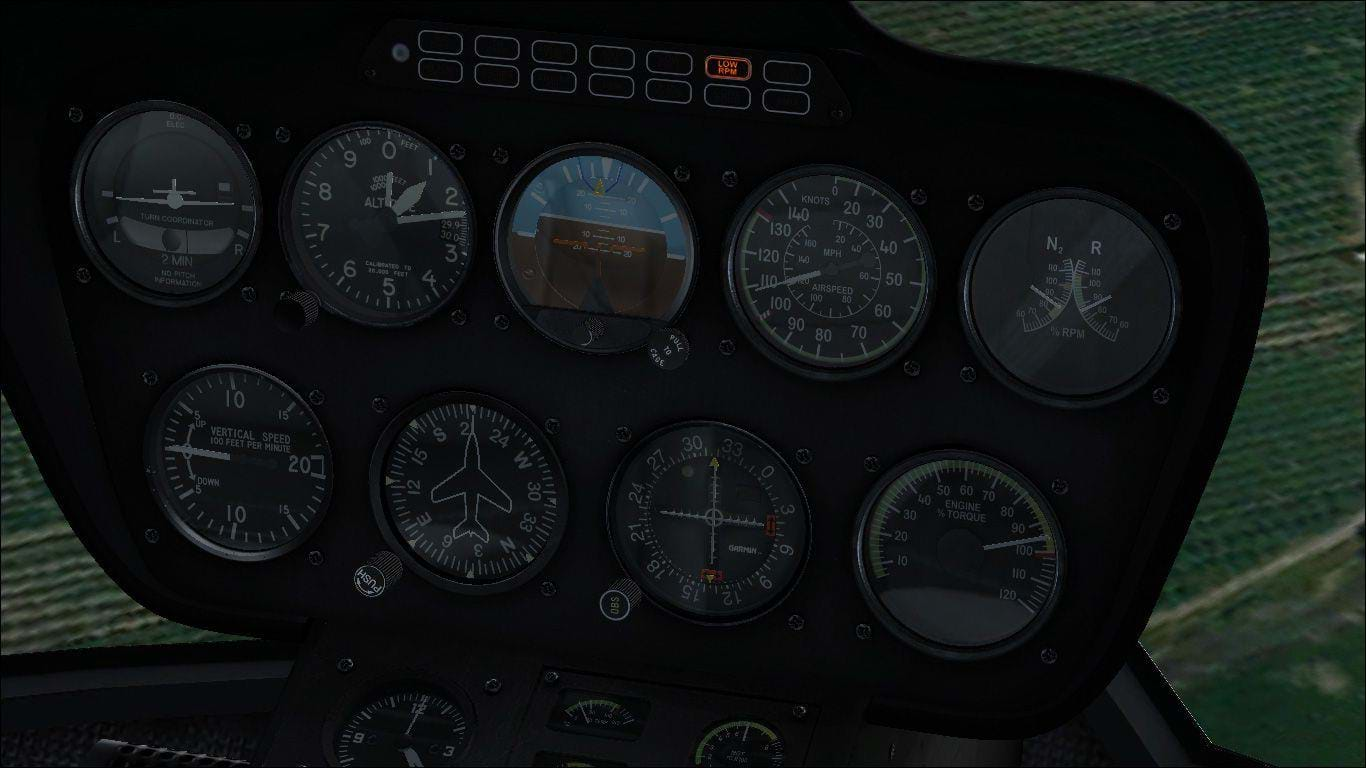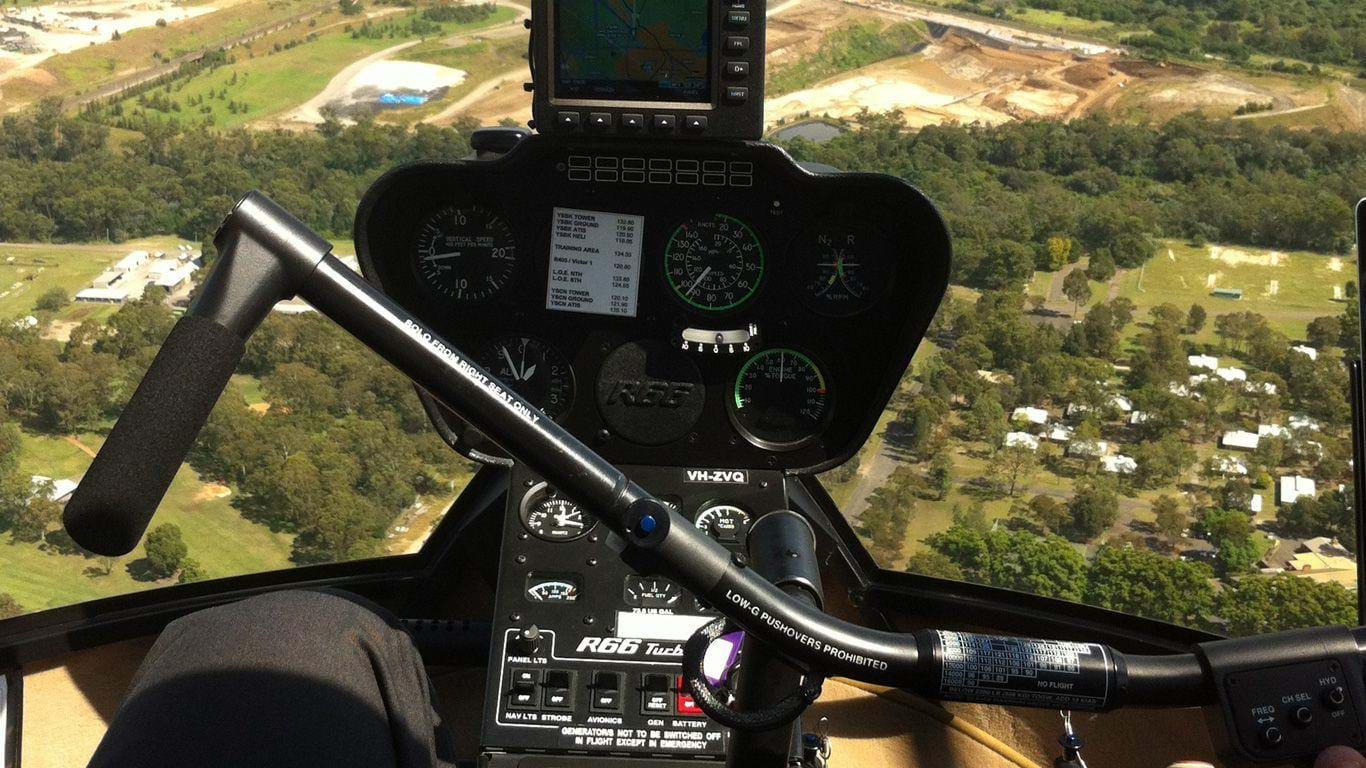Program History
There aren’t too many pilots who have learnt to fly in the last 20 years who haven’t done at least some of their training in a Robinson Helicopter. Frank Robinson’s dream of creating the ultimate affordable helicopter drew him away from Hughes Helicopters in 1973 to form the Robinson Helicopter Company. His first model, the R22, first flew in 1975 and was certified in 1979. The helicopter used a simple ‘pod and boom’ type design much as the Hughes 300 had before and was powered by 124hp O-320 Lycoming engine. The aircraft has been progressively updated throughout the last 30 years and current models are powered by an 180hp Lycoming along with a number of other improvements. Despite some safety concerns, the aircraft has been produced constantly since 1979 with over 4700 airframes being manufactured.
With the R22 firmly in production and selling well, Frank and his engineers looked at developing a four seater. The R44 first flew in 1990 and followed the same basic layout as the R22. The engine was upsized to a 260hp O-540 Lycoming and the tail rotor direction was reversed so that the advancing blade was biting into the already dirty air behind the fuselage. The aircraft was type certified in 1992 and started to fill the niche previously occupied by the five seat Bell 206. The original ‘Astro’ model gave way to the ‘Raven’ in 2000 which improved on the design by hydraulically boosting the flight controls. This was further improved in 2002 with the ‘Raven II’ which increased the AUW and swapped the engine for a fuel injected IO-540 for better altitude performance. The ‘Raven II’ also carried the option for air conditioning.
Although the aircraft was designed to compete with the Bell 206, it never quite managed to due in part to the lack of a fifth seat and the piston engine. To try and close the gap, Robinson laid down plans for an aircraft to extend the R44 and create a true competitor for the light turbine market.
The R66 first flew in late 2007. Visually to the untrained eye, the aircraft is very similar to the R44 but is just over half a foot taller and half a foot wider. The blade chord is bigger and the blades themselves are a bit longer as are the tail rotor blades. The R66 utilises the 300 shp RR300 engine. This is de-rated to 270 shp for take-off and 224 shp continuous. Robinson have clearly designed the aircraft around this engine as the MD500 has an empty weight of around 1100 lbs and uses a 317 shp engine (C model) and the R66s weighs in at nearly 1300 lbs with a 300 shp engine. The R66’s other big selling feature is the luggage space. The R44 only has under seat storage and it’s rather limited as this is also the crumple zone for the seats. The R66 features a large luggage locker in the side of the fuselage big enough for several small suitcases. Unlike the Bell 206, the R44 and R66 have no centre support in the cabin, meaning that the middle seat on the R66 has an unobstructed view outside.
The R66 hasn’t been without controversy. The perils of mast bumping have been known for quite some time and yet, the R66’s high top speed and low weight have been a contributing factor to at least one accident. The high power of the engine in a light airframe has led to some speculation about high power settings damaging the fuselage. Due to Robinsons mantra of making things ‘idiot proof’ the controls are almost identical to the R44 and as a result, people have tried to start them like an R44, leading to a hot start.
Pilots have reported the R66 to be smooth and easy to fly with a large reserve of power. I do know from my own experience that hovering with five people and full fuel, one is only pulling around 70% power. This is unheard of in other comparable helicopters.
The R66 story is still being written. It remains to be seen if, in 40 years’ time, they are still soldiering on like the 500 and 206 are, or if they will be consigned to history as the little helicopter that couldn’t.
Alabeo’s Robinson R66
Alabeo are one of the newbies on the flight sim scene and seem to be nothing if not prolific. They are a subsidiary of Carenado, the well known manufacturer of a long list of fixed wing aircraft and the R66 is their first foray into helicopters. The model is of a standard production model R66 but then again, what else are they going to do? I don’t have any PIC time in the R66 but I have a number of hours in the R44 and I have ridden in the back of an R66 a few times.
Download and Installation
The model comes packed within a self-installer that is 133mb in size. The installer is pretty easy. After purchasing, you will get a serial code that needs to be input along with your email when installing. The installer gives you the option to install for P3D also. The uncompressed files come to 415mb on the hard drive. The installed files place the usual files in the effects, fonts, gauges, simobjects and sound folders. In addition, it places an uninstaller in the main FSX folder. Within the game, you get liveries, depicting six registrations… none of which appear to be real. The registrations might not be real but the actual liveries are used on real world machines. There is also an all white livery, I presume for repainting.
Model and Textures
Alabeo are known for creating visually pleasing models and on the face of it, the R66 does pretty well.
There are very nice reflections and shine that are scaled about right and as far as I can tell, the general shape of the aircraft is correct. The blades, although slightly misshapen, droop realistically like the real thing and all of the various air vents are present and accounted for. The pilot figures are pretty fantastic, they look really lifelike and quite unlike the usual robotic looking figures.
The mesh grills on the aircraft are what appear to be photoreal textures and they definitely work as in the above shot. Other individual components like light globes also seem to be photoreal.
Unfortunately, it isn’t all sunshine. The pic below highlights the ‘stinger’ being in completely the wrong place. On most helicopters, the stinger forms part of the structure and so comes out of the bottom of the vertical stabiliser.
There are a number of inaccuracies in the modelling of the moving components unfortunately. Compared to the modelling of the fuselage the tail rotor gear box shown below isn’t that good. Moving the pedals doesn’t move anything apart from the tail rotor blades themselves. The pitch links don’t appear to be attached to the tail rotor blades at all and there is no gearbox oil sight glass, not even a texture representation. Given how much detail is on the fuselage and as you’ll see shortly, the interior, this is a bit disappointing.
The same types of inaccuracies appear on the main rotor head unfortunately. The real photo is of an R22 rotor head but it illustrates the point nicely. The scissor link is missing all together and the control rods on the stationary swashplates aren’t present. It seems a bit odd that components like this have been missed out altogether.
The other issue that I noticed is that the pitot tube is missing off the mast. I can’t find a photo to compare the model with and to be honest; the tube is so small that it’s not a big problem.
Moving inside and it’s clear that Alabeo have put a lot of effort into the interior.
One of the things about the Robinson series is that the visibility is excellent. Unlike older helicopters where the panel takes up a lot of space in front of the pilot, Robinsons have a small panel in the middle of the helicopter. This presents a problem in the simulator as the gauges and labels become hard to read. This isn’t a new thing, Just Flight’s old R44 suffered from the same problem. I’m not really sure what developers can do to fix this and it’s hard to fault Alabeo on this front. The layout represents a pretty typical early build R66 with standard avionics. Recently Robinson has changed the switches and is offering glass cockpit upgrades.
In the above pic of the cyclic, the power and VNE charts that are on a ‘roller’ are movable like the real thing. The Robinson ‘T-Bar’ cyclic is removable which is pretty good as it covers up a lot of the centre console. Clicking on the boot on the bottom of the cyclic achieves this. Another cool little feature is the guard for the fuel control plunger that hangs from the panel. This is used to prevent the fuel from being cut off accidentally.
Little details like the airworthiness certificate (FAA) and the RFM are present just as they should be (note the fire extinguisher texture is upside down)
Alabeo have included a scuffed Perspex texture that shows up with the light at the right angle. While this might work on the old aeroplanes that they have done, it doesn’t work on brand new aeroplanes or helicopters. If the windscreen was this scuffed, I’d refuse to fly it. The windscreen and gauge reflections are selectable via a 2d panel but the windscreen scuffs stay regardless. Removing the gauge reflections improves the visibility from the default view point but they don’t look as realistic.
I’ll insert a little point here about the rotor system animations. The gearing between the main and tail rotor is the opposite of what it should be. The tail rotor seems to spin slower than the main rotor. Another thing that shows up sometimes is that during shutdown, the animations on the main rotor get a bit confused and when the RPM comes down really low, the blades are spinning backwards.
Another thing I have noticed is that the disc animation is tilted a far too far forward all the time. It’s odd as the blades are level when shutdown. I tried to get a screen shot of it but I couldn’t get the right background to illustrate it properly.
Overall, the external model is fairly sound although Alabeo have missed out a number of details and on an opportunity to create the definitive Robinson model. Although there are some nice photo-real textures that add a level of realism and the interior modelling and textures are great, the lack of attention to detail is painfully obvious
Systems
Robinson’s mantra of making things really simple is carried over into the R66. Where possible, systems have been carried over from the R44 to aid in transition training. The RR300 engine is a modernised version of the classic Allison 250 series of engines that power Bell 206s and Hughes 500s. The starting procedure is, in principle, the same as the Jetrangers and 500s. The R66 differs somewhat by having a ‘caged’ starter which locks the starter when it is energized to try and prevent hot starting. The abbreviated procedure calls for turning the key to enable the igniter, pushing the starter button on the end of the collective, letting it go and watching N1. At 15% or 12% in cold weather, the fuel plunger on the face of the instrument panel is pushed in to introduce fuel. Eyes then go to MGT (Measured Gas Temperature), a fancy term for TOT and making sure that it doesn’t go over 927 degrees and no more than 10 seconds over 782 degrees. Once the N1 is over 61% and the engine is self-sustaining, the starter releases. In the event of a hot start, the starter is locked in and so the only thing the pilot needs to do is pull the fuel plunger to cut the supply of fuel. Once MGT is below 150 degrees, the starter releases automatically and you are free to attempt another start.
We run into a couple of problems with the model right off the bat. The igniter key doesn’t move at all. It’s permanently on all the time. In all honesty, it’s not a huge deal as the only time you’re going to wind the engine over with the key off is when you’re doing a compressor wash or other maintenance. The next problem is that there is no throttle modelled. That’s right, no throttle. It’s on full noise the whole time. In my opinion, this is just lazy. I can’t imagine any developer not modelling a CSU on a fixed wing aeroplane that’s supposed to have one. Before hitting the starter, you’re supposed to look at the MGT to check that it’s not above 150 degrees. The MGT gauge on the model is locked at around 680 degrees. Even though the gauge is labelled MGT, the tooltip (if you have them turned on) calls this gauge a gearbox temperature gauge. So we’re not going to be looking at the temperature during the start.
Hitting the start button gets the N1 moving except that it’s a bit slow. This runs into the sound which I’ll cover later but it takes so long to get to 15% that the sound file has finished and has started again. Once the engine lights off, the N1 races away much too quickly up to 90% due to the lack of throttle but the oil pressure comes up nearly at the right rate. The engine running at full noise all the time plays hell with the N2 and Nr during start. The needles come up so rapidly that they over-speed right off the top of the dual tacho. If it was a real aircraft, I would shut it down immediately. The torque goes screaming up in sync with the other gauges at such a speed that I would be worried about the gearbox getting ripped off the side of the engine. Without throttle control, this is hardly surprising.
Shutdown on the real aircraft simply involves bringing the throttle down to idle, waiting two minutes and then pulling the fuel plunger to shut the flow of fuel to the engine. Key and generator go off at this point and after waiting one minute, the rotor brake can be pulled on to stop the blades.
On the model, because there is no throttle, the engine has to be shut down from flight idle. There is no needle split between N2 and Nr at all when the engine is shut down but N1 and oil pressure reduces at about the correct rate.
The flight controls on the R66 are hydraulically boosted for the cyclic and collective. A single reservoir, three servos and associated feed lines provide assistance on the three push pull rods running to the main rotor swashplate. For the pilot there is a single switch on the cyclic and a circuit breaker for control. There is no warning light. The pump is driven off the main rotor gear box so as long as the system is turning at close to flight speed, there is pressure being provided to the controls. The switch on the cyclic cuts off pressure and the circuit breaker disables the switch. The switch is left on at all times except for emergency training and the hydraulic check after start and the breaker is only used during the check.
Alabeo’s R66 doesn’t have any hydraulic systems modelling. Neither the switch nor the circuit breaker is animated at all. Not really surprising considering the lack of throttle or igniter key. In addition to all of this, there is no N2 beeper switch on the end of the collective.
Overall, it’s not good I’m afraid. I’m not sure if the aircraft really wasn’t understood, if the aircraft was rushed out or if the developer simply doesn’t care. As I said before, the lack of a throttle is akin to modelling an aeroplane that’s supposed to have a CSU and not modelling the CSU. If a developer did that to an aeroplane, they would be crucified. The throttle not being modelled is inexcusable and little things like the igniter key, hydraulic switch and non-working MGT gauge stack up and prevent this aircraft from being at all immersive.
Sound
With the use of a turbine engine, Robinson has managed to cut down on a lot of noise that was present in the R44. The exhaust note on the 44 was quite loud and could be heard clearly over everything else. The reversal of the tail rotor direction from the R22 into the R44 also cut down on a large amount of noise and this is carried over into the R66. With an efficient tail rotor and no discernible exhaust note, the R66 is certainly no noisier than a Bell 206.
On the model, switching the battery on brings up a slight whine of the gyro system which, depending on equipment installed, is pretty accurate. The sound continues indefinitely and when you switch the battery off again, you can hear the gyros winding down. Unfortunately, none of the other switches have any sounds at all. The only other sound I could find for the cockpit was the door sounds. Opening the door you can hear the latch and then the sound of the gas strut extending. Closing the door, the exact same sound is played, not even in reverse, so it sounds like another door opening, not closing. In addition, although the low RPM light is modelled, the accompanying horn that is familiar to all Robinson pilots is missing.
Hitting the starter, the sound of a 250 starter generator starts playing. It sounds about right to me although, I don’t think it was recorded from the inside as it’s a bit too defined. If you don’t inject fuel at the right moment, the sound starts playing again and will continue to repeat until you hit the button again or you inject fuel. This of course isn’t correct but at least it sounds about right. When you inject the fuel, the interior sound has a lot of bass to the point where the sound itself starts to distort although the blending is OK. The sound continues as the engine tears itself to pieces going straight up to flight idle and the blending of the sounds from the acceleration to the normal interior sound is noticeable but not too bad.
From the outside, I’m not too sure about the start-up sound. It almost sounds like a Turbomecca out of a Squirrel to me. The blending between the starter sound and the fuel ignition sound is pretty poor really and the sounds, which I suspect were recorded from the real thing, don’t match the animation of the blades starting to spin at all.
The exterior sounds at flight idle sound pretty accurate to me with no looping problems. The tail rotor buzz is present although it sounds a bit too defined to me, almost like a Jetranger. I have checked the videos of the R66 that I took though and confirmed that Alabeo has it about right.
The interior sound at flight isn’t quite right. The basic idea is there but the real thing is has a much more pronounced transmission whine. The sound sitting in the machine is almost the same as a Bell 206. This was possibly omitted to save peoples ears as the real thing is pretty savage sounding.
Shutdown presents a real mystery to me. There doesn’t appear to be a sound file for the engine itself shutting down. This is possibly due to the noise already present from the rotor system drowning out any other sounds that are playing. The use of the rotor brake during shutdown means that the sound of the blades going will play long after the blades have actually stopped.
Overall, a bit mixed. It appears that they had access to a real R66 or at least recordings of the real thing but they’ve missed the mark a little, particularly on the interior and shutdown sounds. The lack of ambient cockpit sounds is a little disappointing also.
Flight Dynamics
Robinson designed the R66 to be a bit of a pilot’s machine. Smooth, good tail rotor authority, fast and comfortable. As a private and a scenic machine, they have nailed it. It remains to be seen how they fair with aerial work type tasks.
On Alabeo’s aircraft, once the engine is up to flight and you start raising the collective; it’ll pop right off the ground with no pedal input about 45% torque at MAUW. The real aircraft needs a bit of left pedal and doesn’t hover at much less than 70% in the same conditions. If there is any wind over about 15kts in the sim, I have found it to be impossible to hover in a crosswind. The aircraft behaves like a piece of paper and just gets blown sideways. Hovering downwind is possible but it’s very difficult to get it there. Trying to move the aircraft laterally in the hover is difficult as the cyclic seems very ineffective to the point where you find yourself using full travel to make low speed manoeuvres. Any rapid power increase produces a low RPM light and any power increase over about 80% produces reducing RPM that falls well below the green range. It’s strange but with falling RPM, I can still climb at 1000fpm at max weight.
Transitioning to forward flight, the aircraft accelerates smoothly through to about 80kts. If you want to go any faster than that, you have to pull power and stick the nose at the ground. At 100kts, the aircraft is about 15 degrees nose down. The sim pic below shows the nose down attitude, low RPM and power setting and the real photo is of the last flight I took in an R66 showing almost the same conditions. Note the level attitude and power setting.
The stick has to be held quite a way forward and speed and it is actually quite difficult to maintain level flight. The cyclic is slightly more effective about the roll axis in forward flight but not by much. It’s kind of like flying a wet sponge and I wouldn’t want to fly it any real distance
Trying to flare, the aircraft has a tendency to either balloon back into the sky or drop like a rock. I have yet to accomplish a quick stop to the level that I would be happy with in other helicopter add-ons.
Without throttle control, the only way to simulate an auto is to perform an inflight shutdown. From 1800ft AMSL, cutting the fuel and entering auto, I had no control of the RPM. It performed exactly like it does when you shut down the engine on the ground. By the time I started to flare, the rotor RPM was down around 60% and in real life, it would have been a fatal accident. Strangely though, with no RPM, I was still able to cushion the landing on by raising the collective. The rotor RPM was off the bottom of the gauge by this point. I’ve now tried several different autos and I have come to the conclusion that it is impossible to auto the aircraft properly.
Overall, there isn’t much to say except that there aren’t many redeeming qualities in this flight model. Poor hover characteristics in the wind (and out of it), flying nose down like a Hughes 300, impossible to auto properly…. I could go on but I think you get the general idea.
Miscellanous
Documentation
The documentation on this aircraft is rather brief with an 11 page PDF file that has been lifted straight out of section four (Normal Procedures) of the R66 RFM (Rotorcraft Flight Manual). It details all the correct procedures for start-up, normal flight, hydraulics off, autorotation and shutdown. It’s interesting as very little of this can be simulated by the model. There is also a seven page PDF file lifted straight out of section three (Emergencies) of the RFM detailing various actions for engine fire etc. It’s a nice touch but ultimately useless when the model doesn’t simulate any of it.
Special Effects
I think it’s important to point out here that Alabeo have included a great little feature that shows up during start and shutdown. Anybody who has flown two bladed helicopters will tell you that they can get a bit of a rock on at low RPM during start and shutdown and Alabeo have modelled this. Passing a certain RPM, the whole cockpit begins a slight rock at about the right frequency and the same happens during shutdown. This is only visible from the interior view but it really is wonderful and it’s just a pity that you don’t get to enjoy more of it as the RPM quickly passes the idle setting and screams up to flight. I wish more developers would implement something like this as it adds a lot of atmosphere.
Weight and Balance Stations
One of the big selling points for the R66 over the R44 was the big ‘boot’ that the 66 has. The boot can handle 300 lbs. (136 kg) spread over 50 lbs. per square foot. Interestingly, Alabeo’s model doesn’t have a w+b station for the baggage compartment. I know that one could modify the aircraft.cfg file to add one but we really shouldn’t have to tweak simple things like this.
Where to get it
You can get it here: http://www.alabeo.com/index.php?accion=product&correl=97

